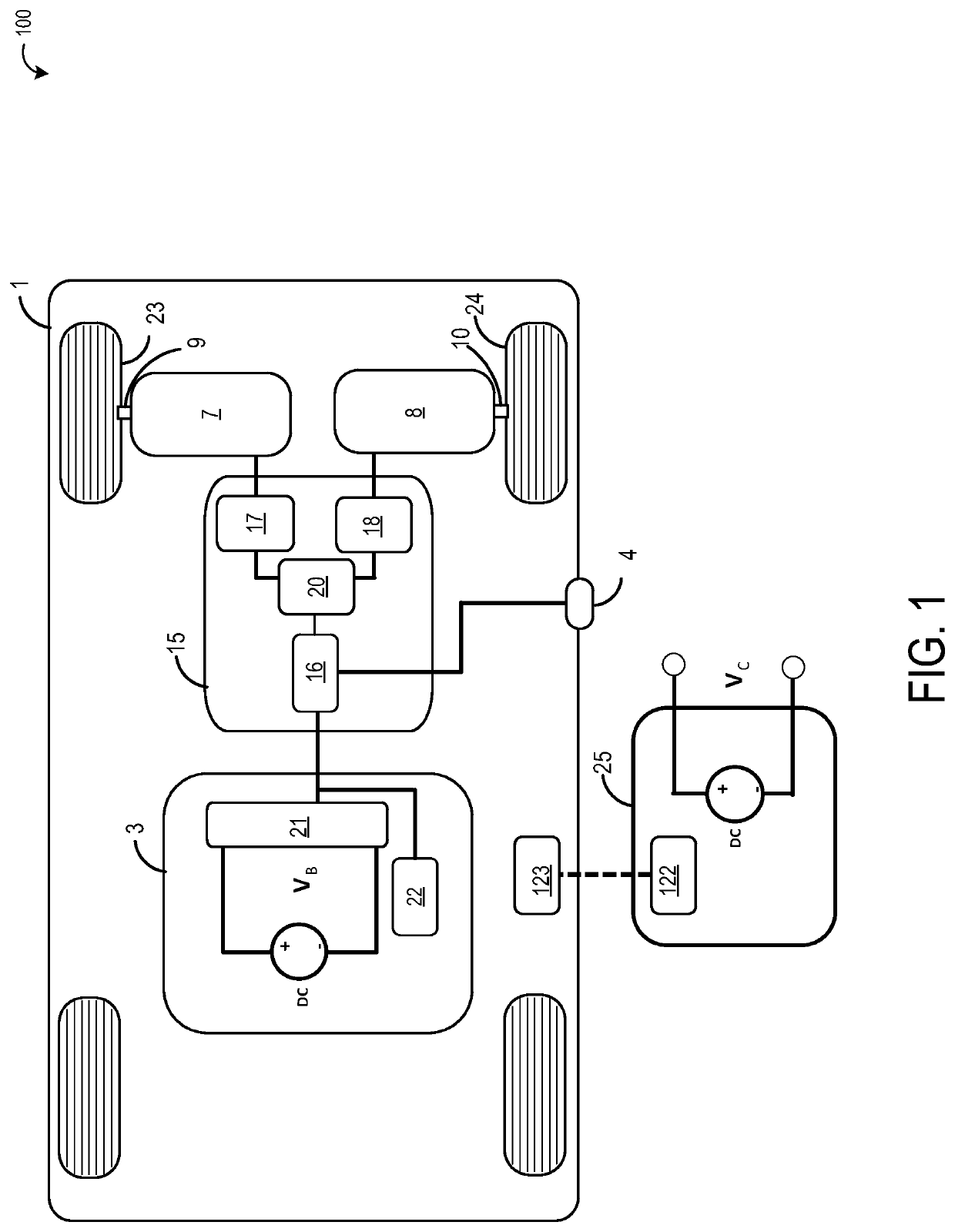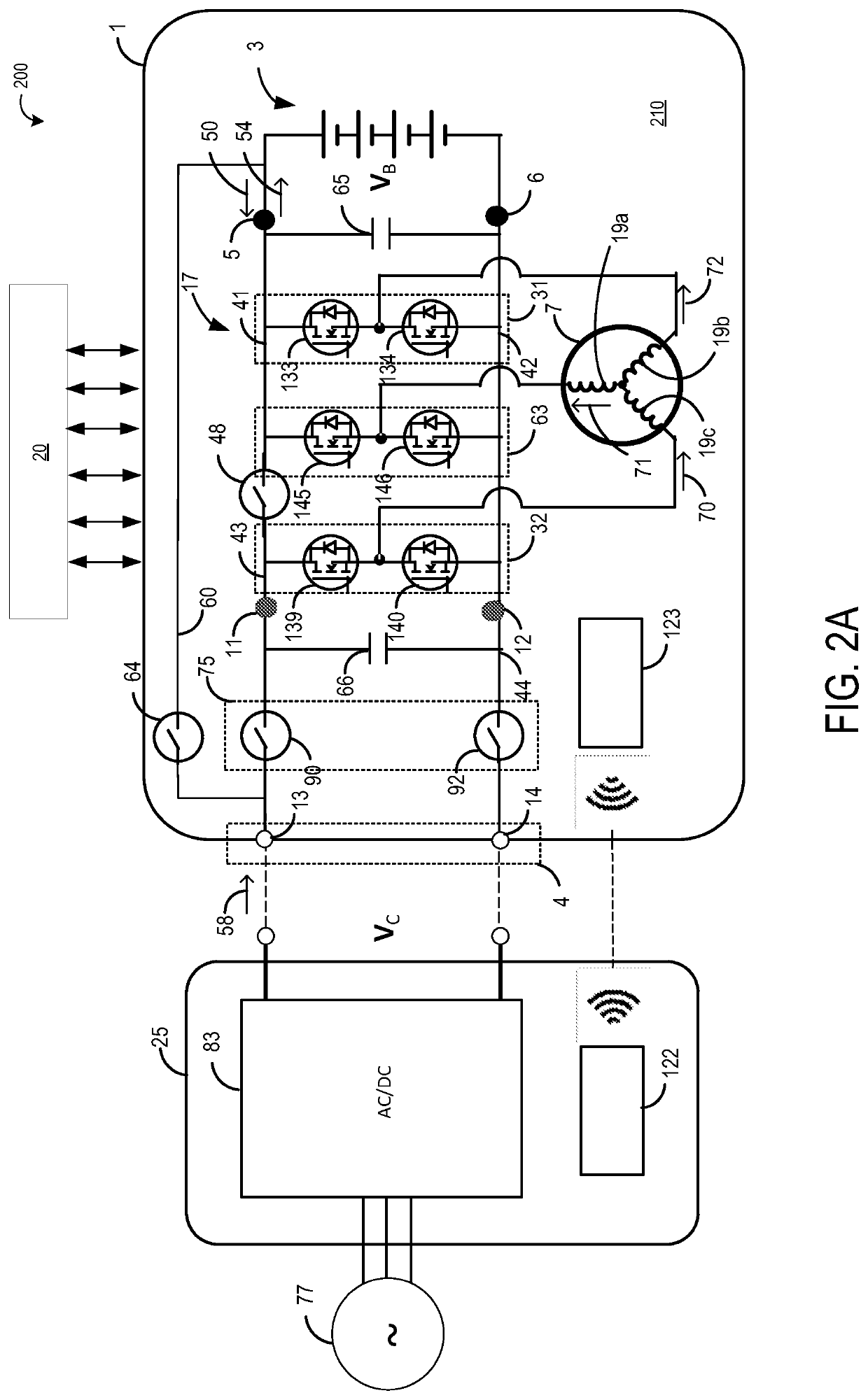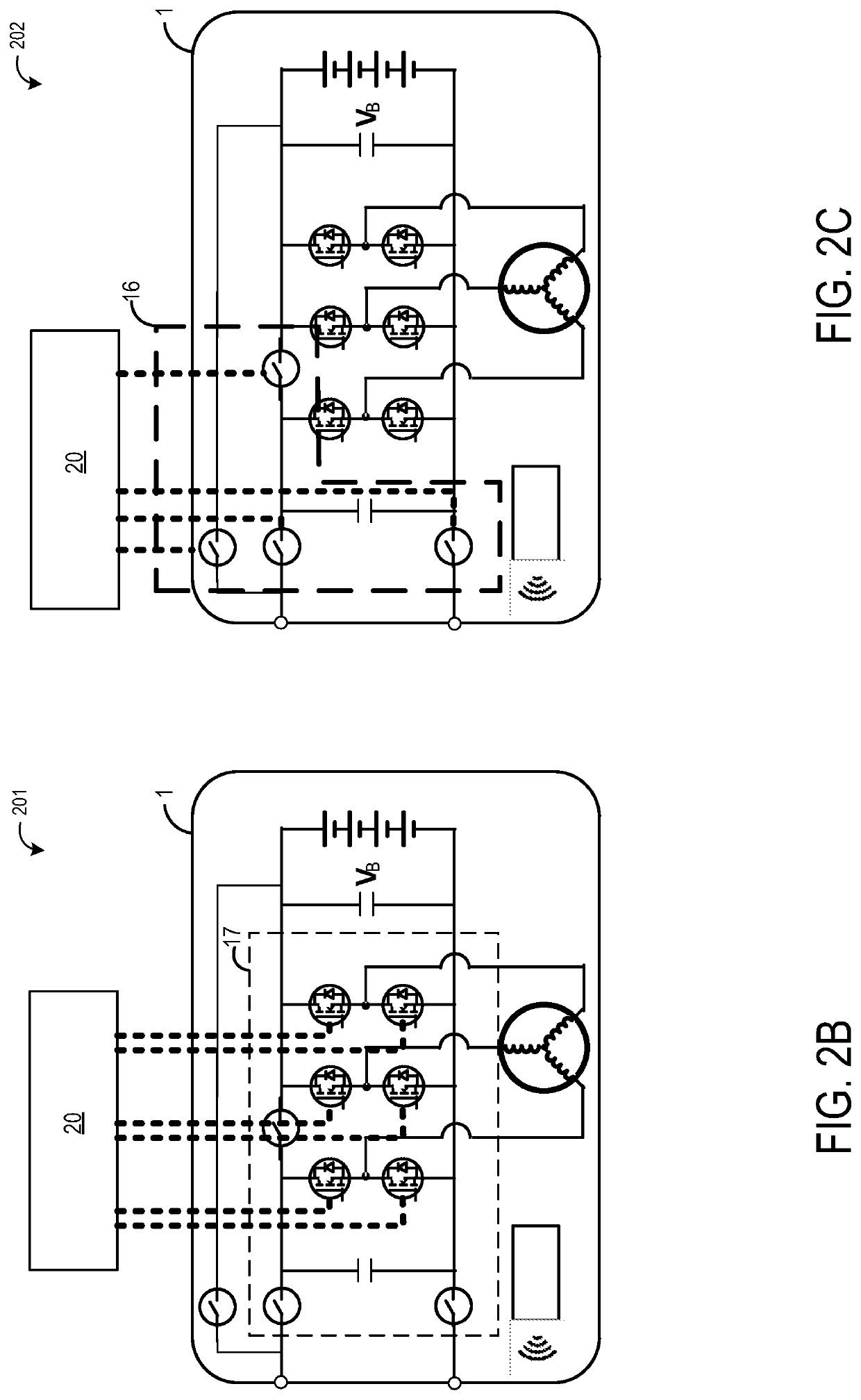Methods and systems for an integrated charging system for an electric vehicle
- Summary
- Abstract
- Description
- Claims
- Application Information
AI Technical Summary
Benefits of technology
Problems solved by technology
Method used
Image
Examples
Embodiment Construction
[0027]It is known that consumers favor electric vehicles with longer ranges and faster charge times, and these factors are therefore a significant factor for mass market adoption of these vehicles. Moreover, recent significant reductions in battery costs have enabled a new generation of electric vehicles to emerge with extended ranges, which is achieved due to a significant increase in the available energy storage on board each vehicle. While this may have ameliorated the range concerns of electric vehicles, this extra onboard energy storage takes longer to fully charge. Accordingly, to alleviate the faster charge time requirements, there is a need for a greatly increased power transfer to the onboard storage (e.g., the battery).
[0028]In an attempt to address this need for higher power charge rates, vehicle manufacturers have moved to higher voltages to be able to transfer the power required between the infrastructure (e.g., the charging station) and the vehicle. This solution also ...
PUM
 Login to View More
Login to View More Abstract
Description
Claims
Application Information
 Login to View More
Login to View More - R&D
- Intellectual Property
- Life Sciences
- Materials
- Tech Scout
- Unparalleled Data Quality
- Higher Quality Content
- 60% Fewer Hallucinations
Browse by: Latest US Patents, China's latest patents, Technical Efficacy Thesaurus, Application Domain, Technology Topic, Popular Technical Reports.
© 2025 PatSnap. All rights reserved.Legal|Privacy policy|Modern Slavery Act Transparency Statement|Sitemap|About US| Contact US: help@patsnap.com



